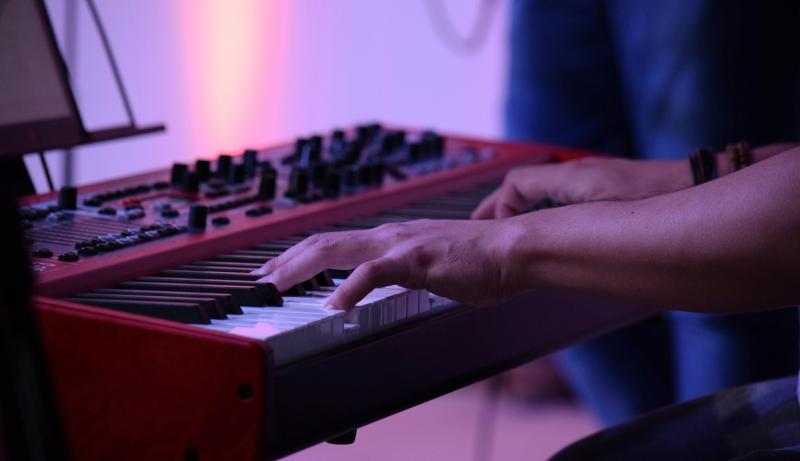Digital Pianos as Learning Tools
When it comes to learning how to play the piano, digital pianos offer a range of advantages that make them an excellent choice for beginners and experienced students alike. While traditional acoustic pianos have long been the instrument of choice for piano lessons, digital pianos bring a modern, versatile option to the table. In this article, we’ll explore the key benefits of using a digital piano for piano lessons and why they can be an ideal tool for improving your skills and developing as a pianist.
1. Affordability: A Budget-Friendly Learning Solution
One of the most significant benefits of using a digital piano for piano lessons is its affordability. High-quality acoustic pianos can be expensive, often costing thousands of dollars, while digital pianos offer a more budget-friendly alternative without sacrificing the core elements needed for learning.
Entry-Level Options
Digital pianos come in a variety of price ranges, with entry-level models being quite affordable for those just starting their musical journey. These models often include essential features such as touch-sensitive keys and realistic piano sounds, making them a great choice for beginners on a budget.
Long-Term Value
In addition to the initial cost savings, digital pianos also offer long-term value. They don’t require the regular tuning and maintenance that acoustic pianos do, further reducing the ongoing costs associated with owning a piano. This makes digital pianos a cost-effective option for anyone looking to start piano lessons.
2. Compact Size and Portability: Perfect for Small Spaces
For many learners, especially those living in small apartments or homes with limited space, the size of an acoustic piano can be a significant drawback. Digital pianos, however, are much more compact and portable, making them an ideal option for piano lessons in any environment.
Lightweight and Portable
Unlike bulky acoustic pianos, digital pianos are lightweight and easy to move. This makes them perfect for students who may need to transport their piano to different locations or reposition it at home for optimal learning. Whether you're taking lessons in a music studio or practicing at home, a digital piano provides flexibility in how and where you use it.
Space-Saving Design
Digital pianos are designed to fit into smaller spaces without compromising on quality. Many models can be stored compactly when not in use, and portable options often come with foldable stands, making them a great choice for those who don’t have a dedicated practice area.
3. Silent Practice with Headphones: No Distractions
One of the standout features of digital pianos is the ability to practice silently using headphones. This is particularly beneficial for students who live in shared spaces or need to practice at odd hours without disturbing others.
Enhanced Focus
Practicing with headphones allows students to focus entirely on their playing without distractions from background noise or interruptions. This can lead to faster progress as learners can concentrate on developing technique and muscle memory without external influences.
Freedom to Practice Anytime
With a digital piano, you have the freedom to practice at any time of day or night. Whether you're an early riser or a night owl, the ability to plug in headphones and play silently means you can fit your practice schedule around your daily life without worrying about noise complaints from neighbors or family members.
4. Built-In Learning Tools: A Teacher in Your Instrument
Many digital pianos come equipped with built-in learning tools and features that can enhance the lesson experience. These tools, such as metronomes, recording capabilities, and built-in tutorials, can help students develop their skills more effectively.
Metronomes and Rhythm Guides
Keeping time is a fundamental skill for pianists, and most digital pianos come with built-in metronomes to help students stay on beat. Rhythm guides are also available in some models, allowing beginners to practice playing in time and with greater precision.
Recording and Playback Features
Recording your practice sessions is an excellent way to track progress, identify areas for improvement, and celebrate milestones. Many digital pianos offer recording and playback capabilities, making it easy for students to listen to their performances and assess their technique. This feature can be especially useful for piano teachers, who can provide more detailed feedback based on recorded performances.
5. Connectivity: Integrate with Apps and Online Lessons
Digital pianos are designed to integrate seamlessly with modern technology, offering connectivity options that enhance the learning process. Many models come with USB, MIDI, or Bluetooth connectivity, allowing students to connect their piano to computers, tablets, and smartphones for additional learning resources.
Access to Learning Apps
There are countless piano learning apps available that can connect to your digital piano, providing interactive lessons, sheet music, and video tutorials. This expands the range of resources available to students, allowing them to supplement their lessons with additional practice tools and exercises.
Online Piano Lessons
With a digital piano, students can also easily participate in online piano lessons. Teachers can provide real-time feedback during virtual lessons, and students can use apps or software to enhance their learning experience. This makes digital pianos a great option for those who prefer learning remotely or combining in-person lessons with online resources.
6. Volume Control: Play at the Perfect Level
Another great benefit of digital pianos is their ability to control volume. Unlike acoustic pianos, which have a fixed sound level, digital pianos allow you to adjust the volume to suit your environment and preferences.
Practice at Lower Volumes
Whether you're practicing early in the morning or late at night, you can adjust the volume on your digital piano to ensure you’re not disturbing others. This makes it much easier to practice consistently, regardless of your surroundings.
Amplifying for Performances
On the flip side, digital pianos also offer the ability to amplify sound for performances or larger spaces. You can easily connect your piano to external speakers or amplifiers, allowing you to project sound to an audience while maintaining high-quality audio output.
7. No Tuning Required: Always in Perfect Pitch
One of the most practical advantages of using a digital piano is that it never needs tuning. Unlike acoustic pianos, which require regular tuning and maintenance to keep them sounding their best, digital pianos remain in perfect pitch, no matter how often or how long they’re played.
Consistency in Sound
With a digital piano, students can focus on their technique and musicality without worrying about the piano going out of tune. This consistency helps beginners develop their ear for music and ensures that they always have a reliable instrument for practice and lessons.
Low Maintenance
The fact that digital pianos don’t require tuning or much maintenance makes them a hassle-free choice for beginners. This allows students to spend more time practicing and less time (and money) worrying about maintaining their instrument.
Conclusion: A Digital Piano is an Ideal Learning Companion
When it comes to piano lessons, digital pianos offer a range of benefits that make them a great choice for learners of all levels. From affordability and portability to built-in learning tools and the ability to practice silently, digital pianos provide the flexibility and features needed to support students as they develop their skills. Whether you’re a beginner looking for an entry-level instrument or an intermediate player seeking advanced features, a digital piano can be the perfect companion for your piano lessons.



